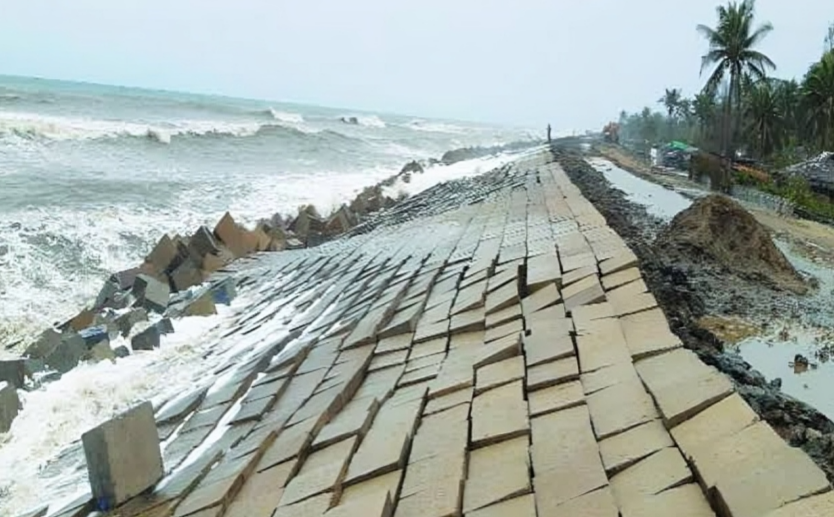
প্রিন্ট এর তারিখঃ জানুয়ারী ৯, ২০২৫, ১০:১৭ পি.এম || প্রকাশের তারিখঃ মে ৩১, ২০২৪, ৪:২৬ এ.এম
Coastal people need embankment more than rice cloth

Savar correspondent: Cyclone Remal caused heavy rains and tidal waves in the coastal areas of Bangladesh. According to Save the Children, thousands of children and their families have been affected in various ways by the cyclone and are in urgent need of help right now.
Cyclone Remal lashed the southern coastal lowlands of Bangladesh with heavy rains last Sunday and wind speeds of up to 135 kilometers per hour till last Monday. According to the local authorities, about one and a half lakh people have been affected by this cyclone, including about 7.6 lakh children. About 800,000 people have been evacuated to shelters in preparation for the storm and 78,000 volunteers have been deployed to help with relief efforts. People in the region have been trapped in shelters as flood control dams breached due to massive inundation caused by the storm.
Coastal embankments are implemented to protect the people of coastal areas during natural disasters. If the dam is good, they will be saved from disaster. And when the dam breaks, everything including their houses, crops, roads are washed away. People become destitute.
Coastal Embankment Project or CEP covering a wide area of Chittagong, Noakhali, Feni, Cox's Bazar, Laxmipur, Barisal, Bhola, Jhalkathi, Patuakhali, Pirojpur, Barguna, Khulna, Satkhira and Bagerhat districts. The flow of water in this project is controlled by sluice gates or sluice gates during dam construction and dewatering. Also there is an effective system for water removal. The project is managed by the Bangladesh Water Development Board. It was implemented in two phases between 1961 and 1978. The first phase included the construction of 92 polders, bringing 10 lakh hectares of land under the scheme. Polder is a Das word, meaning an area surrounded by long earthen embankments (dykes) built to prevent flooding. In the second phase, it is possible to recover four lakh hectares of land in 16 polders. Over 4,000 km long embankments and 1,039 drainage sluice gates have been constructed under CEP so far. All types of dikes belong to the embankment category. Sea dykes are mainly located at the mouth of the sea or on the banks of wide rivers in the coastal areas of the Bay of Bengal. These dams play an important role in dealing with high waves in these places. Apart from their positive role in increasing agricultural production, these dams are used as a means of road communication, which has imparted dynamism to the development of the overall socio-economic condition of the coastal region. Embankments are effective in protecting land from tidal inundation, but cannot protect against damage caused by high tides and tidal surges that exceed the embankment's height.
According to the relief and rehabilitation ministry's list after the cyclone, the government identified 33 upazilas of the country as sea-adjacent disaster areas. Residents of the 710 km long coastal area are in extreme danger due to lack of planned development activities in these upazilas. Adequate cyclone shelters have not yet been constructed in cyclone-prone areas. The embankments have also not been fully renovated over the years. The coastal polders are very old, most of them more than 50-60 years old. They are made of mud and have fallen into disrepair due to lack of proper maintenance. In addition, holes or pipes placed inside the dams to inject salt water for shrimp farming have made them fragile. As a result, the polders have lost their ability to prevent flooding during abnormal tides or cyclones. Construction of permanent embankments and rehabilitation of old embankments is required across isolated islands and grasslands along the coast. For them the embankment needs to be built first. Embankment is more important and necessary for them than rice cloth.
Copyright © Daily Muktakathan News © Registration Under Process